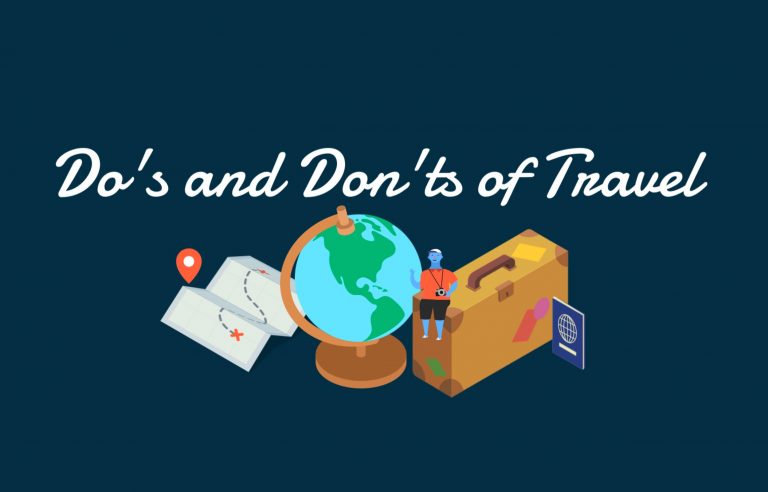Zombie Bunny is Reader-supported and may earn an affiliate commission through links on our site.
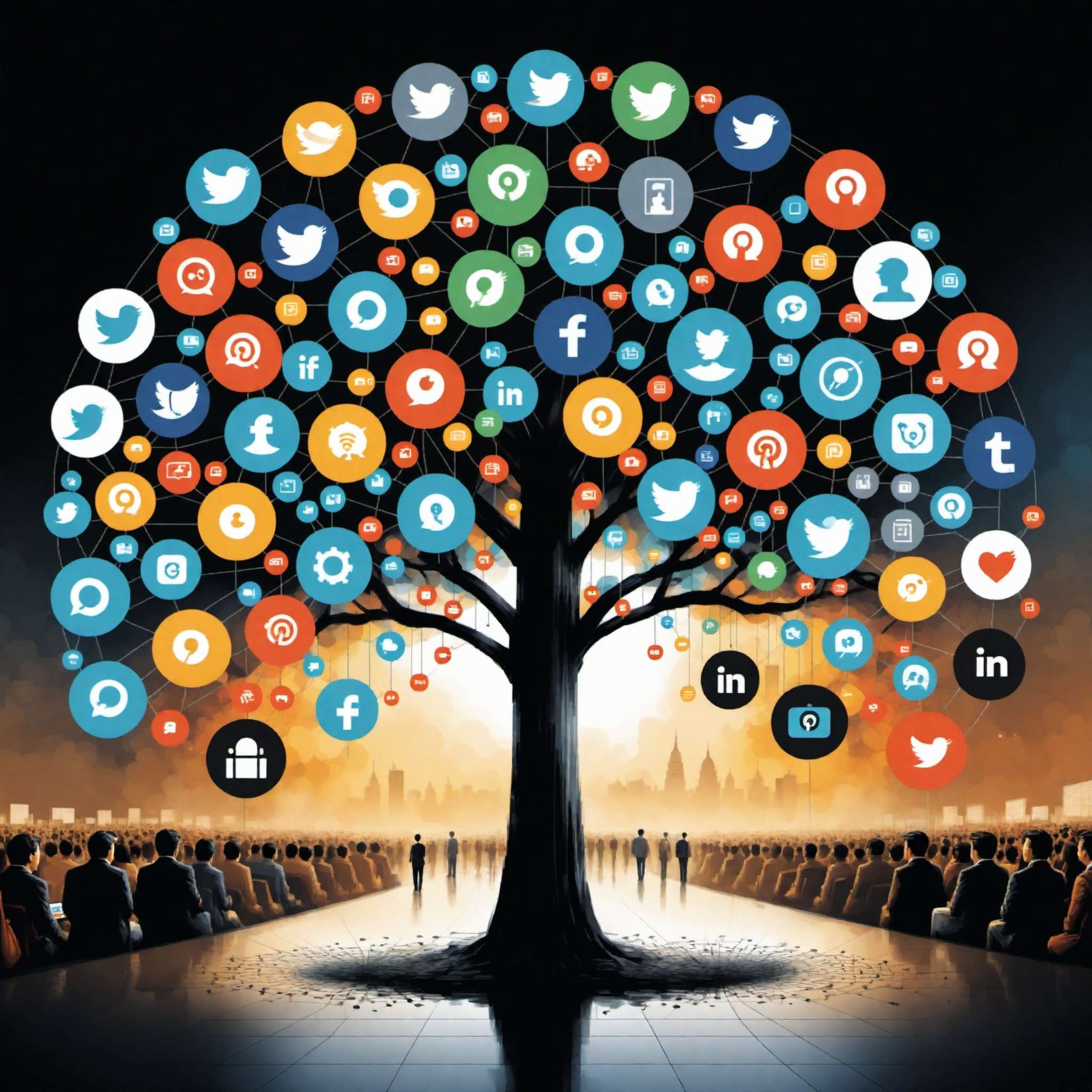
The Double-Edged Sword of Social Media
Investigate the pros and cons of social media and its impact on society. #SocialMediaProsCons #DigitalSociety
Explore the profound impact of social media on our lives and society in this comprehensive blog post. From fostering global connections and amplifying voices to posing new challenges like cyberbullying and data privacy concerns, social media is truly a double-edged sword. We delve into the complexities of these digital platforms, including their role in shaping public opinion, driving innovation, and even promoting inclusivity. Understand the darker side of social media as we shed light on pressing issues like misinformation spread, addiction, and mental health concerns. Join us on this journey to comprehend the power, potential, and pitfalls of social media in our digital era.
Introduction: The Paradox of Social Media

© Copyright , ZombieBunny.Org
Prevalence of social media
Social media has permeated every aspect of our modern life, becoming a powerful tool that shapes our interactions, decisions, and perceptions of the world. Today, it’s hard to imagine a world without platforms like Facebook, Twitter, Instagram, and Snapchat. These digital platforms have created a fundamental shift in how we communicate, enabling instant connection with people all over the globe.
However, the prevalence of social media is a double-edged sword. While it brings us closer together, it also exposes us to new challenges and risks. The paradox lies in the very nature of social media – its power to connect also has the potential to isolate, its capacity to inform also holds the ability to mislead. As we navigate the digital landscape, it’s critical to understand this paradox and the implications of our social media use. This blog will delve into the many faces of social media, revealing both its benefits and pitfalls.
Defining the paradox
The paradox of social media lies in its duality, acting as both a boon and a bane to our society. On one hand, it’s a revolutionary tool that has redefined communication, fostered global connections, and even sparked social change. It’s the platform where ideas are shared, voices are heard, and creativity flourishes. Social media has brought the world closer, making it a smaller, more connected place.
On the other hand, it’s a platform that can be manipulated and misused, leading to an array of issues from cyberbullying to data privacy concerns. It can be addictive, prompting unhealthy comparisons and fueling feelings of inadequacy. Even more concerning, it’s become a fertile ground for misinformation, with the potential to influence public opinion and disrupt societies. This dichotomy forms the essence of the social media paradox – the very tool that enables connection and empowerment can also lead to disconnection and disenfranchisement. Understanding this paradox is the first step in wielding the double-edged sword of social media responsibly.
Previewing the double-edged sword
In this exploration of the double-edged sword of social media, we’ll delve into the multifaceted impact of these digital platforms on our lives and society. We’ll examine the immense benefits, from fostering global connections and facilitating creativity, to revolutionizing commerce and amplifying voices. Through real-life examples and case studies, we’ll highlight how social media has transformed the way we communicate, share, and create, becoming a catalyst for innovation and change.
Simultaneously, we’ll confront the darker side of social media – the risks and drawbacks that come with the territory. We’ll shed light on the serious issues of cyberbullying and harassment, the psychological impacts of addiction and social comparison, the growing concerns around data privacy, and the alarming spread of misinformation. By understanding these challenges, we can navigate the social media landscape with increased awareness and responsibility, making informed choices about our engagement with these platforms.
As we journey through the various aspects of social media, the goal is not to vilify or glorify it but to understand its complexity. The double-edged sword of social media is ultimately in how we wield it, and this blog aims to equip you with the knowledge to do so wisely and effectively.
The Power of Connection: Social Media’s Positive Impact
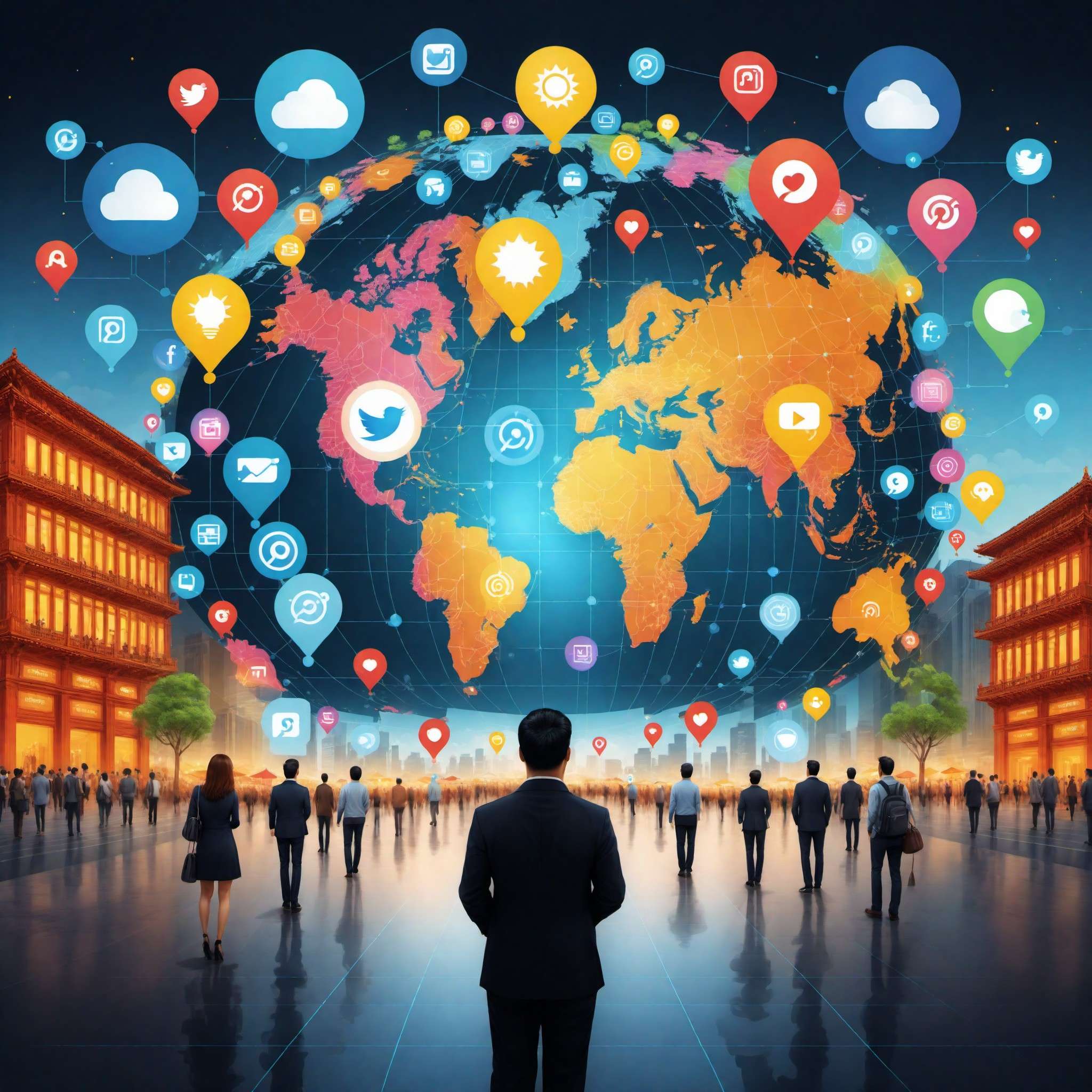
© Copyright , ZombieBunny.Org
Social media’s role in connection and communication
In the digital era, social media has become a primary mode of connection and communication, fundamentally reshaping how we interact with one another. These platforms have turned the world into a global village, allowing us to connect with people from different cultures, backgrounds, and geographical locations with the click of a button. Whether it’s staying in touch with friends and family, networking for professional opportunities, or joining communities with shared interests, social media has revolutionized the way we form and maintain relationships.
The communicative power of social media goes beyond person-to-person interaction. It offers a platform for individuals and organizations to share information, spread awareness, and voice opinions on a global scale. It’s the space where news breaks, ideas are born, and movements gain momentum. Social media has democratized communication, empowering users with the ability to broadcast their message to a worldwide audience. From live-tweeting events to viral campaigns on Instagram, social media has become an integral part of how we communicate, share, and engage with the world around us.
The empowerment of user-generated content
Social media has ushered in an era of user-generated content, empowering individuals like never before. By providing a platform for users to create and share content, social media has democratized the digital space, shifting the balance of power from traditional media outlets to the hands of everyday users. This democratization has ignited a creative revolution, with individuals now having the ability to express themselves, share their experiences, and influence others on a global scale.
User-generated content is not just about personal expression. It also plays a significant role in shaping consumer behavior. Reviews, testimonials, and user-generated photos or videos can greatly influence the decision-making process of potential customers. Brands have recognized this power, often encouraging and leveraging user-generated content for marketing purposes. Furthermore, user-generated content fosters a sense of community and engagement, as users can interact, share, and learn from each other’s content.
In this digital age, everyone with a social media account has the potential to be a content creator, a critic, a teacher, or an influencer. This empowerment is a testament to the transformative power of social media, where the voices of many can be heard, shared, and amplified.
Promoting inclusivity and diversity
Social media has emerged as a powerful platform for promoting inclusivity and diversity. It has provided a voice to those who were often marginalized or underrepresented in traditional media, creating a more diverse and inclusive space where everyone’s story matters. Whether it’s individuals sharing their personal experiences, communities rallying for change, or brands showcasing a broader representation of society, social media has made strides in promoting diversity and inclusion.
This inclusivity extends to the global reach of these platforms. Social media connects us with individuals from different cultures, backgrounds, and perspectives, promoting cross-cultural understanding and global awareness. It’s a space where diverse voices can be heard, different stories can be told, and varied experiences can be shared, fostering a global dialogue that embraces diversity.
Moreover, social media has played a crucial role in driving social change. Hashtags like #BlackLivesMatter, #MeToo, and #LoveIsLove have sparked global movements, raising awareness about important issues and rallying support for change. These movements have leveraged the power of social media to shed light on inequalities, challenge biases, and champion inclusivity.
In promoting diversity and inclusivity, social media has shown its potential as a force for good. It underscores the importance of using these platforms responsibly, to foster a digital landscape that is inclusive, diverse, and respectful.
A Platform for Creativity and Innovation

© Copyright , ZombieBunny.Org
Social media as a creative outlet
Social media has become a dynamic platform for creativity, offering a digital canvas where users can express themselves, experiment with different mediums, and showcase their work to a global audience. From stunning photography on Instagram to captivating videos on TikTok, from insightful blogs on LinkedIn to innovative designs on Pinterest, social media is a rich tapestry of creativity, where every user has the potential to be an artist.
What sets social media apart as a creative outlet is its accessibility and interactivity. It offers a low-barrier entry for creators, allowing anyone with a smartphone or computer to share their creativity with the world. It’s not just about posting content, but also about engaging with the audience, receiving feedback, and being part of a creative community. This interactive nature of social media fosters a vibrant creative ecosystem, where ideas are shared, collaborations are sparked, and inspiration is just a scroll away.
Moreover, social media has opened new avenues for creativity. Users are continually innovating, leveraging the features of these platforms to create unique content formats like memes, GIFs, and Stories. In doing so, they are not just consuming content but also contributing to the evolution of digital creativity. The power of social media as a creative outlet lies in its ability to democratize creativity, turning every user into a potential creator.
Innovation within social media platforms
Innovation within social media platforms is constantly reshaping the digital landscape, creating new ways for users to interact, share, and create. From the introduction of live streaming and Stories format to the integration of augmented reality filters and shopping features, these platforms are continually evolving, pushing the boundaries of what’s possible in the realm of social networking.
One key area of innovation is in algorithmic personalization, where platforms use machine learning algorithms to tailor content based on users’ interests, behaviors, and interactions. This personalization enhances the user experience, making it more relevant and engaging, but it also raises questions about data privacy and echo chambers, highlighting the complexity of innovation in social media.
Another significant advancement is in the realm of video content. With the rise of platforms like TikTok and the introduction of features like Instagram Reels and YouTube Shorts, short-form video content has taken the social media world by storm. This shift towards video content showcases the adaptability of social media platforms, responding to user behavior and trends to stay relevant in the competitive digital space.
These innovations within social media platforms not only enhance the user experience but also create new opportunities and challenges. As these platforms continue to innovate, it’s crucial for users to stay informed, understanding the implications of these advancements on their social media use.
The rise of influencer culture
The rise of influencer culture is a defining feature of modern social media. Powered by the democratization of content creation and the personalization of social media algorithms, influencers have emerged as powerful figures within the digital landscape. They are content creators, trendsetters, and opinion leaders, with a significant impact on their followers’ attitudes, behaviors, and purchasing decisions.
Influencer culture has transformed the dynamics of marketing and advertising. Instead of relying solely on traditional advertising channels, brands are now partnering with influencers for product promotions, sponsored content, and brand ambassadorships. This form of influencer marketing leverages the trust and rapport that influencers have with their followers, making it a potent tool for brand awareness and consumer engagement.
However, the rise of influencer culture has also sparked debates around authenticity and credibility. With influencers often receiving compensation for their endorsements, there’s a fine line between genuine recommendations and paid promotions. Furthermore, the pressure to maintain a perfect online persona can lead to unrealistic standards and unhealthy comparisons among followers, highlighting the complexities of influencer culture.
Despite these challenges, there’s no denying the impact of influencer culture on social media. As influencers continue to shape the digital discourse, it’s important for users to engage with this culture critically, understanding the dynamics behind the content they consume.
Social Commerce: The New Marketplace
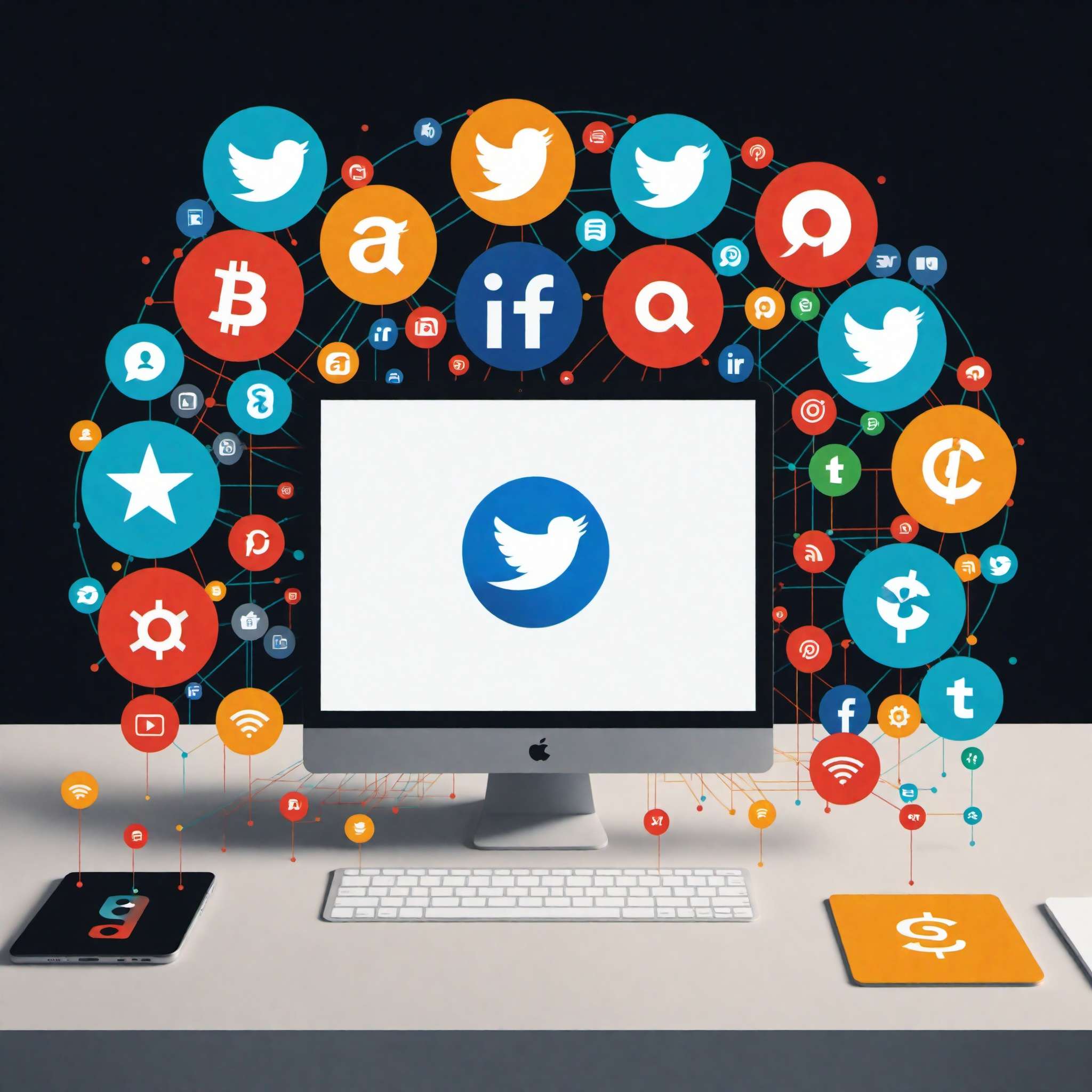
© Copyright , ZombieBunny.Org
E-commerce on social media
The emergence of e-commerce on social media, often referred to as social commerce, has created a new marketplace that’s transforming the way we shop. Social media platforms like Instagram, Facebook, and Pinterest have integrated shopping features, turning their platforms into virtual storefronts where users can discover, explore, and purchase products without leaving the app.
One of the key advantages of social commerce is its seamless integration of shopping into the social media experience. Users can browse products, read reviews, and make purchases while engaging with their favorite content. This integration creates a more interactive and personalized shopping experience, enhancing customer engagement and satisfaction.
Moreover, social commerce leverages the power of social proof and user-generated content. Customers can share their purchases, write reviews, and post photos of products, influencing potential buyers. This social aspect of shopping, combined with the convenience of online shopping, makes social commerce a powerful tool for brands.
However, like any other facet of social media, social commerce comes with its challenges, including issues around data privacy and the potential for impulse buying. As social commerce continues to grow, it’s important for users to navigate this new marketplace with awareness and responsibility, making informed decisions about their purchases.
Influence of social media on consumer behavior
Social media has a profound influence on consumer behavior, shaping how consumers discover, evaluate, and purchase products. With the rise of social commerce, this influence has become even more significant, as consumers increasingly turn to social media for their shopping needs.
One way social media influences consumer behavior is through the power of social proof. Reviews, ratings, and user-generated content can greatly impact a consumer’s decision-making process. Seeing positive reviews or photos of a product in use can instill confidence in potential buyers, nudging them towards a purchase.
Another critical aspect is the role of influencers in shaping consumer behavior. Influencers’ endorsements can sway their followers’ perceptions and preferences, driving consumer trends and boosting product sales. This influence is particularly strong among younger consumers, who often look up to influencers for product recommendations.
Moreover, social media platforms use sophisticated algorithms to personalize the shopping experience, showing users products based on their interests, behaviors, and past purchases. This personalized shopping experience can influence consumer behavior, driving impulse purchases and increasing customer loyalty.
However, this influence also raises concerns about consumer privacy and the potential for manipulation, highlighting the importance of transparency and ethical practices in social commerce. As consumers, it’s important to be aware of these influences and make informed decisions about our online shopping behaviors.
Social media and personal branding
In today’s digital age, social media has become a vital tool for personal branding. Whether you’re an entrepreneur, a professional, or an influencer, your social media presence can serve as a platform to showcase your skills, share your expertise, and build your personal brand.
Personal branding on social media is about more than just self-promotion. It’s about establishing a digital identity that reflects your values, passions, and unique selling points. It’s about engaging with your audience, sharing valuable content, and building a reputation within your field. Your social media profiles are often the first point of contact for potential employers, clients, or followers, and a strong personal brand can make a lasting impression.
Moreover, social media allows for a level of authenticity and personal connection that’s hard to achieve through traditional branding methods. By sharing your journey, your insights, and your personality, you can build a genuine connection with your audience, fostering trust and loyalty.
However, personal branding on social media also requires careful management. It’s essential to maintain a consistent image, stay active and responsive, and be mindful of the content you share. As social media becomes increasingly intertwined with our professional lives, understanding how to leverage these platforms for personal branding can be a powerful asset.
The Dark Side of Social Media: Cyberbullying and Harassment

© Copyright , ZombieBunny.Org
The prevalence of cyberbullying
In the shadow of social media’s connectivity and openness lies a darker side: the prevalence of cyberbullying. Cyberbullying involves the use of digital platforms to intimidate, harass, or harm individuals, and it has become a growing concern in our increasingly connected world. From hateful comments and public shaming to spreading rumors and sending threatening messages, cyberbullying takes many forms, and its impact can be devastating.
With the anonymity and wide reach offered by social media, cyberbullying can occur at any time and anywhere, making it a pervasive issue. Young people, in particular, are often the targets of cyberbullying. According to a survey by the Cyberbullying Research Center, about 34% of students have experienced cyberbullying during their lifetime. These experiences can lead to emotional distress, decreased academic performance, and in extreme cases, self-harm or suicide.
Despite the gravity of this issue, cyberbullying often goes unnoticed or unreported due to the lack of physical evidence and the silence of victims. As users of social media, it’s important to be aware of the prevalence of cyberbullying and to take a stand against it. This includes reporting incidents, supporting victims, and promoting a culture of respect and kindness online. Only by confronting this issue can we begin to harness the power of social media for good, while mitigating its potential harm.
Negative impact on mental health
The impact of social media on mental health is a complex and important issue. While these platforms can offer social connection and self-expression, they can also contribute to feelings of inadequacy, anxiety, and depression. This negative impact on mental health is particularly evident among young people, who are the most active users of social media.
One key factor is the culture of comparison that social media fosters. Users often present an idealized version of their life online, leading others to compare their own lives with these curated images. This comparison can lead to feelings of inadequacy, low self-esteem, and even body image issues.
Another concern is the addictive nature of social media. The constant stream of updates, likes, and comments can be hard to resist, leading users to spend excessive amounts of time on these platforms. This overuse of social media can lead to sleep problems, decreased productivity, and increased stress levels.
Moreover, social media can exacerbate feelings of loneliness and isolation. While these platforms offer virtual connections, they can also create a sense of social exclusion and contribute to feelings of loneliness.
Recognizing these potential harms is the first step in mitigating the negative impact of social media on mental health. It’s important to use social media mindfully, taking breaks when needed, and focusing on real-life connections. By understanding and addressing these issues, we can create a healthier digital environment for all.
Social media’s role in amplifying negativity
Within the vast landscape of social media, the amplification of negativity is a growing concern. This phenomenon, often referred to as the ‘negative bias’ of social media, involves the tendency for negative content such as scandals, controversies, or harmful behaviors to spread faster and wider than positive content.
Social media’s design and algorithms often contribute to this amplification. These platforms thrive on engagement, and negative content tends to spark strong reactions and generate more likes, shares, and comments. This increased engagement signals to the algorithm to promote the content further, fueling a cycle of negativity.
This amplification of negativity can have serious consequences. It can perpetuate harmful narratives, exacerbate polarization, and fuel online conflicts. Even on an individual level, exposure to negative content can affect a user’s mood, perspective, and mental health.
However, it’s important to remember that social media is a tool, and its impact largely depends on how we use it. By being mindful of our consumption and engagement with negative content, we can help mitigate its amplification. This might involve adjusting our social media habits, promoting positive content, and engaging responsibly. As users, we have the power to shape the digital landscape and foster a healthier social media environment.
Addiction and Social Comparison: A Psychological Perspective

© Copyright , ZombieBunny.Org
Social media addiction
Social media addiction is a growing concern in our hyper-connected world. Characterized by excessive use of social media platforms, an inability to reduce usage, and distress when deprived of access, social media addiction can have serious repercussions on an individual’s mental health, relationships, productivity, and overall well-being.
The addictive nature of social media largely stems from its design. Features like notifications, likes, and endless scrolling are designed to capture and hold our attention, triggering a dopamine response in the brain, similar to other addictive behaviors. This ‘reward’ system can lead to habit formation and over time, compulsive use.
The implications of social media addiction can be far-reaching. Excessive use can lead to sleep problems, impaired focus, and increased stress and anxiety. It can also interfere with face-to-face relationships and real-life experiences, leading to social isolation despite the seeming ‘connectedness’ these platforms offer.
However, recognizing the signs of social media addiction is the first step towards managing it. Implementing digital detoxes, setting usage limits, and focusing on offline activities are some strategies to combat this issue. As we navigate the digital world, it’s essential to strike a balance, harnessing the benefits of social media while minimizing its potential harms.
The phenomenon of social comparison
The phenomenon of social comparison on social media platforms is a significant aspect of the psychological impact these platforms can have. As users scroll through their feeds, they’re constantly exposed to curated snapshots of other people’s lives – their achievements, experiences, appearances, and possessions. This exposure can lead to upward social comparison, where individuals compare themselves unfavorably to others, leading to feelings of inadequacy, low self-esteem, and even depression.
It’s important to remember that what’s shared on social media often represents a highlight reel of someone’s life, not their everyday reality. This curated nature of social media can create unrealistic standards and foster a culture of comparison and competition. Even positive posts like fitness achievements or travel photos can trigger feelings of inadequacy in others, leading to what’s known as ‘comparison fatigue’.
However, awareness of this phenomenon can help mitigate its impact. Recognizing that social media content is often idealized and curated can help individuals maintain perspective when engaging with these platforms. Focusing on self-compassion, gratitude, and offline connections can also help counter the negative effects of social comparison. As we navigate the social media landscape, it’s important to use these platforms mindfully, understanding their potential psychological impacts.
Implications for mental health
The implications of social media for mental health are multifaceted and significant. While these platforms can offer benefits like social connection and self-expression, they can also contribute to mental health issues like anxiety, depression, and low self-esteem. These effects are particularly pronounced among young people, who are the most active users of social media.
Social media addiction is one aspect of this issue. The compulsive use of these platforms can lead to sleep problems, impaired focus, and increased stress and anxiety. Furthermore, the culture of comparison fostered by social media can lead to feelings of inadequacy and low self-esteem.
Cyberbullying is another concern. The anonymity and wide reach of social media can facilitate bullying and harassment, leading to emotional distress and in severe cases, self-harm or suicide.
Moreover, the constant exposure to curated and idealized images can create unrealistic standards, leading to body image issues and eating disorders. It can also fuel feelings of FOMO (Fear of Missing Out), contributing to anxiety and dissatisfaction.
However, it’s important to note that the relationship between social media and mental health is complex and influenced by various factors, including the way individuals use these platforms and their pre-existing mental health conditions. As we navigate the digital world, it’s crucial to use social media mindfully and seek help when needed, fostering a healthier relationship with these platforms.
Privacy Concerns: The Cost of Free Platforms

© Copyright , ZombieBunny.Org
Understanding data privacy
In the age of digital connectivity, understanding data privacy is crucial, especially when it comes to social media. These platforms collect a wealth of user data, including personal information, behavior patterns, and interactions. This data is often used to personalize the user experience, target advertising, and even shape the content you see.
While this data collection can enhance the functionality of these platforms, it also raises significant privacy concerns. Users often unknowingly give up a significant amount of personal information, which can be used in ways they did not intend or agree to. Additionally, data breaches or unscrupulous data sharing practices can expose users’ personal information, leading to potential misuse.
Understanding data privacy involves being aware of what information you’re sharing, who you’re sharing it with, and how it’s being used. It’s crucial to read and understand the privacy policies of the platforms you use. Regularly reviewing your privacy settings and being mindful of the information you share can also help protect your data.
Furthermore, the conversation around data privacy extends beyond individual users. It calls for policy changes and transparency from social media companies, as well as regulatory oversight to ensure user data is protected. As we navigate the digital world, understanding data privacy is a fundamental part of maintaining control over our digital identities.
Social media and data breaches
Data breaches represent one of the most serious threats to privacy in the realm of social media. A data breach occurs when unauthorized individuals gain access to confidential information, often with the intention to misuse it. With the vast amounts of personal data stored on social media platforms, these breaches can have far-reaching implications.
In recent years, major social media platforms have fallen victim to data breaches, exposing millions of users’ personal information. These breaches not only violate users’ privacy but can also lead to identity theft, financial loss, and a significant loss of trust in the platform.
Social media data breaches often result from hacking, poor security practices, or even inside jobs. Despite the high security measures put in place by these platforms, no system is completely immune to breaches. As such, it’s essential for users to take proactive measures to protect their data, such as using strong, unique passwords, enabling two-factor authentication, and being wary of suspicious links or requests.
In addition to individual efforts, addressing data breaches requires action from social media companies and regulatory bodies. This might involve implementing stronger security measures, ensuring transparency in data practices, and holding companies accountable for breaches. As the digital landscape continues to evolve, the issue of data breaches underscores the need for continuous vigilance in protecting our data online.
The illusion of free platforms
Social media platforms are often touted as free services, providing users with a space to connect, share, and interact at no cost. However, this notion of ‘free’ platforms is largely an illusion. While users may not pay a monetary fee to use these platforms, they pay in another valuable currency: their data.
Every like, share, search, and interaction on social media generates data. This data is a goldmine for social media companies, allowing them to create detailed user profiles, personalize content and ads, and even sell this information to third parties. In essence, users pay for these ‘free’ platforms with their personal information and online behavior.
This model, often referred to as ‘data capitalism’, raises significant privacy concerns. Users often unknowingly consent to this data collection and usage when they agree to the platforms’ terms and conditions. However, the implications of this data exchange are often not fully understood by users.
Understanding the true cost of these ‘free’ platforms is critical in navigating the digital landscape. It involves being mindful of the information we share and the digital footprints we leave. It also calls for greater transparency from social media companies and regulatory oversight to protect user data. As we engage with social media, it’s important to remember: if you’re not paying for the product, you are the product.
Fake News and Misinformation: Beyond the Digital Frontier
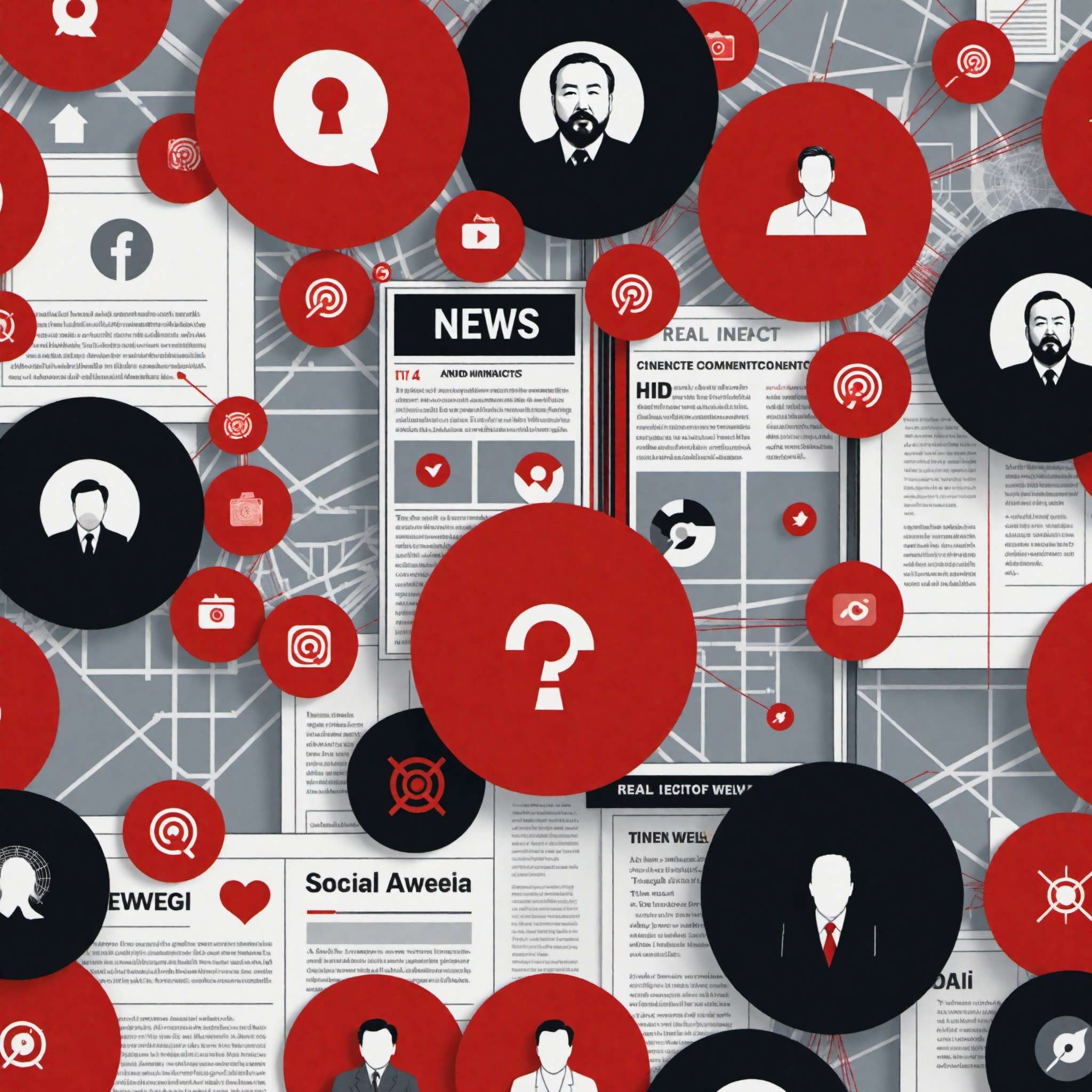
© Copyright , ZombieBunny.Org
The spread of misinformation
The spread of misinformation on social media is a growing concern in today’s digital age. Misinformation, often circulating as ‘fake news’, involves the dissemination of false or misleading information, often with the intention to sow confusion, stoke fear, or manipulate public opinion.
Social media platforms provide a fertile ground for the spread of misinformation due to their wide reach, rapid dissemination, and the echo chamber effect. Misinformation can go viral within hours, reaching millions of users across the globe. The echo chamber effect, where users are exposed to content that reinforces their existing beliefs, further fuels the spread of misinformation.
The implications of this misinformation are far-reaching. It can undermine public trust in institutions, exacerbate social divisions, and even pose threats to public health and security. Recent examples include the spread of misinformation around COVID-19 and elections, highlighting the real-world impacts of this issue.
Combatting misinformation requires a multi-faceted approach, involving social media companies, fact-checkers, regulatory bodies, and users themselves. This might include implementing stronger content moderation policies, promoting media literacy, and encouraging critical thinking. As users, it’s important to be discerning about the information we consume and share, verifying information from reliable sources before passing it on. In the era of ‘fake news’, maintaining an informed and critical approach to social media is more important than ever.
Social media’s role in shaping public opinion
Social media plays a significant role in shaping public opinion, a role that has grown exponentially with the ubiquity of these platforms. Through the sharing of news, ideas, and opinions, social media can sway public sentiment on a wide range of issues, from politics and social issues to consumer trends and popular culture.
One of the key ways social media shapes public opinion is through the power of virality. Information, whether accurate or not, can spread rapidly on social media, reaching large audiences and shaping their perceptions and beliefs. The echo chamber effect, where users are exposed to content that aligns with their existing views, further reinforces these opinions.
Influencers also play a pivotal role in shaping public opinion. With their large following and perceived credibility, influencers can sway their audience’s opinions on various topics. This influence is often leveraged in influencer marketing and advocacy campaigns.
However, the role of social media in shaping public opinion also raises concerns, particularly regarding the spread of misinformation and the potential for manipulation. The repercussions can be serious, from influencing election outcomes to fueling social unrest.
As we navigate the digital landscape, it’s important to critically evaluate the information we consume on social media. Fact-checking, diversifying our information sources, and questioning the intent behind the content can help us form informed opinions and resist manipulation.
The fight against fake news
In the age of digital proliferation, the fight against fake news has become a pressing challenge. Misinformation, or ‘fake news’, is not a new phenomenon, but the advent of social media has amplified its spread and impact. The fight against fake news involves multiple stakeholders – from tech companies and governments to educators and individuals.
Social media platforms have a significant role to play in this fight. This involves implementing robust content moderation policies, developing advanced algorithms to detect and remove false content, and promoting transparency in their practices. There’s also a growing call for regulatory oversight to hold these platforms accountable.
Education and media literacy are crucial in this fight. This involves teaching individuals to critically evaluate information, verify sources, and understand the potential motives behind the content they encounter online. Media literacy education can empower users to navigate the digital landscape with discernment and resilience.
Fact-checking organizations also play a critical role, working tirelessly to debunk misinformation and provide accurate, reliable information.
However, the fight against fake news is an ongoing challenge, requiring constant vigilance and adaptation. It’s a shared responsibility that calls for collective action. As users of social media, we must also do our part by verifying information before sharing, reporting false content, and promoting a culture of truth and integrity online.
Regulating the Digital World: A Call for Change

© Copyright , ZombieBunny.Org
The need for stronger regulations
The rise of social media has outpaced the development of regulations governing its use, leading to a pressing need for stronger and more comprehensive regulations. These regulations are essential in addressing the various challenges posed by social media, including data privacy concerns, the spread of misinformation, cyberbullying, and the potential for manipulation and exploitation.
Data privacy is one area where stronger regulations are needed. Despite privacy policies and user agreements, many users are unaware of the extent to which their data is collected, used, and shared. Stronger regulations can ensure transparency and consent in data practices, protecting users’ digital rights.
The spread of misinformation or ‘fake news’ is another area where regulations can play a role. Regulations can hold social media platforms accountable for the content they facilitate, encouraging them to take proactive measures against misinformation.
Cyberbullying and online harassment also call for regulatory action. While many platforms have policies against such behaviors, enforcement can be inconsistent. Stronger regulations can ensure platforms take responsibility for maintaining a safe and respectful online environment.
However, the call for stronger regulations is not without challenges. It involves balancing the need for protection and accountability with the preservation of free speech and innovation. It’s a complex issue that requires ongoing dialogue and cooperation among tech companies, governments, and society. As we continue to navigate the digital world, the need for stronger regulations underscores the importance of ethical, responsible use of social media.
Successful examples of social media regulations
While the need for stronger social media regulations is clear, there are already some successful examples of such regulations in place. These cases provide valuable insights into how we can better manage the challenges posed by social media.
The General Data Protection Regulation (GDPR) in the European Union is a notable example. Enacted in 2018, the GDPR provides individuals with greater control over their personal data. It requires companies to be transparent about how they collect, use, and store data, and imposes heavy fines for non-compliance. The GDPR has significantly enhanced data protection and privacy, setting a benchmark for other regions.
In Germany, the Network Enforcement Act (NetzDG) is another example of successful regulation. The act requires social media platforms to remove illegal content within a certain timeframe or face hefty fines. This has led to more proactive content moderation and a safer online environment.
In Singapore, the Protection from Online Falsehoods and Manipulation Act (POFMA) was enacted to combat the spread of misinformation. The act empowers the government to order corrections or removals of false statements that harm public interest.
These examples illustrate the potential of regulations in addressing the challenges of social media. However, each region has its unique context and challenges, requiring tailored approaches. As we strive for stronger regulations, it’s crucial to learn from these successful examples, adapting and refining regulations to meet evolving digital challenges.
The role of users in driving change
While regulations and policies play crucial roles in managing the challenges of social media, users themselves have a significant role in driving change. After all, social media platforms exist because of their users, and user behavior can shape the way these platforms operate.
One of the ways users can drive change is by advocating for better practices. This could involve voicing concerns about data privacy, misinformation, or online harassment, and demanding better responses from social media companies. Public pressure can be a powerful catalyst for change, as seen in various campaigns and movements that have led to policy changes on these platforms.
Users also have the power to shape the online environment through their behavior. This includes reporting inappropriate content, engaging responsibly, and promoting a culture of respect and kindness online. By doing so, users can help create a safer, more positive social media space.
Furthermore, users can protect their own rights by being informed and vigilant. This involves understanding privacy policies, adjusting privacy settings, and being mindful of the information they share. Users can also foster media literacy, helping themselves and others to navigate the digital world with discernment and resilience.
In the face of social media’s challenges, users are not just passive recipients but active agents of change. By harnessing this power, users can help shape a better digital future.
Conclusion: Navigating the Double-Edged Sword
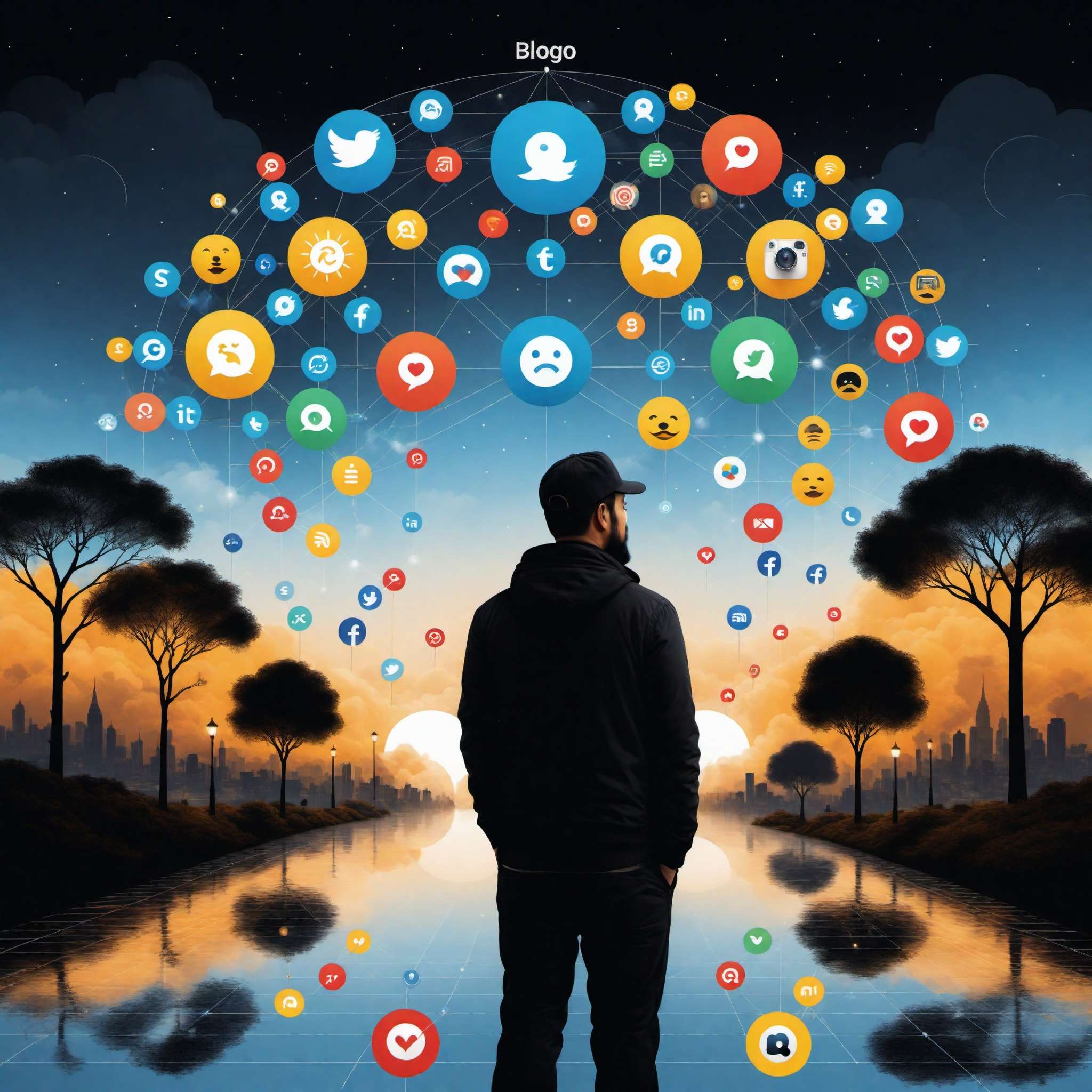
© Copyright , ZombieBunny.Org
Revisiting the paradox
Social media, with its vast reach and transformative power, is truly a double-edged sword. On one side, it offers the potential for connection, expression, and information sharing on a global scale. On the other, it presents challenges including data privacy concerns, the spread of misinformation, and implications for mental health. Navigating this paradox is a complex but necessary task in our increasingly digital world.
Facing these challenges involves a multi-faceted approach. It requires stronger regulations and transparency from social media companies. It requires education, fostering media literacy, and critical thinking skills among users. It also requires individual vigilance and responsibility in the way we use these platforms.
No single solution can address all the challenges posed by social media. However, by understanding this complex landscape and actively engaging with it, we can begin to shape a more positive digital future. This involves balancing the benefits of social media with its potential risks, and using these platforms in ways that enhance our lives, rather than detract from them.
As we continue to explore the potential of social media, it’s crucial to remember the double-edged nature of these platforms. With awareness, responsibility, and action, we can harness the positive power of social media while mitigating its potential harms. This is the challenge, and also the opportunity, of our digital age.
The power of informed choices
The power of informed choices cannot be overstated when it comes to navigating the double-edged sword of social media. As users, we have the ability to shape our own digital experiences, and our choices can significantly influence the impact of social media on our lives.
Making informed choices involves understanding the workings of social media platforms, from their data practices to their content algorithms. It involves being aware of the potential risks, such as data breaches, misinformation, and the implications for mental health. Armed with this knowledge, we can make choices that protect our privacy, foster our well-being, and contribute to a healthier digital environment.
Informed choices also involve how we engage with content. This includes critically evaluating the information we consume, diversifying our information sources, and promoting positive content. By doing so, we can resist the spread of misinformation, combat the echo chamber effect, and foster a more balanced and nuanced understanding of the world.
Additionally, informed choices encompass how we interact on these platforms. Engaging responsibly, reporting inappropriate content, and promoting a culture of respect can ensure a safer and more positive online space for all users.
In the face of the challenges posed by social media, the power of informed choices offers a beacon of hope. By making informed choices, we can navigate the double-edged sword of social media, harnessing its benefits while mitigating its potential harms.
Looking towards the future
As we look towards the future, the role of social media in our lives is set to grow. With advancements in technology, the way we connect, communicate, and consume information will continue to evolve. However, along with these exciting possibilities, the challenges associated with social media will also continue to evolve. Navigating this future will require resilience, adaptability, and informed, responsible use.
One of the key challenges will be managing the data privacy implications of increasingly integrated digital lives. As our online footprints expand, protecting our personal information will become more complex, requiring stronger regulations and more robust security measures.
The fight against misinformation will also continue to be a pressing issue. As the digital information landscape expands, the potential for the spread of misinformation grows. Combatting this will require ongoing efforts from social media platforms, fact-checkers, educators, and users themselves.
Despite these challenges, the future of social media also holds immense promise. The potential for global connection, collaboration, and innovation is vast. By harnessing the power of social media responsibly, we can foster a digital world that enhances our lives and societies.
As we look towards this future, the key will be balancing the benefits of social media with its potential risks. By making informed choices, advocating for change, and using these platforms responsibly, we can navigate the double-edged sword of social media and shape a positive digital future.
Please support our site and purchase something from our store.






